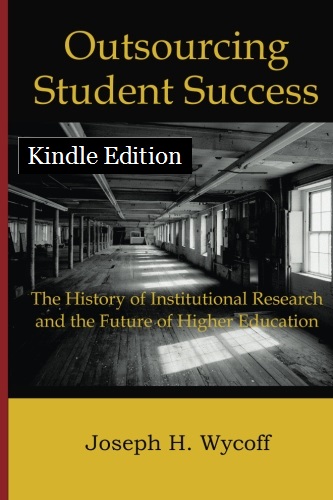| International |
Red Alert: PM Modi’s contempt for higher education makes India fall behind other countries | Apathy of the Prime Minister towards higher education indicates that he may not be aware how it plays central role in helping people and societies confront and cope with the profound changes happening around us.
More than half of young people are going to university for the first time, figures reveal | Last year, 50.2 per cent of English 17 to 30-year-olds enrolled on undergraduate degrees at British institutions, according to the Department for Education (DfE). This means that the pledge made by former prime minister Tony Blair two decades ago has finally been fulfilled.
Reliance on foreign PhD students ‘could harm US research’ | Data from the Organisation for Economic Cooperation and Development analysed by Times Higher Education suggest that the country is falling behind many other developed nations on new PhD numbers. Although about 71,000 people gained a PhD in the US in 2017 – more than double the number in any other developed country – when this is scaled to population size, the number of doctoral graduates in the US falls below many other OECD member nations.
| U.S. National |
Opinion: Free higher education fosters a healthy democracy | Author Wendy Brown, in “Undoing the Demos: Neoliberalism’s Stealth Revolution,” writes that market rationality has converted higher education from a public good to an investment. Such a conversion must, in my opinion, be undone in our discussions of free higher education and higher education altogether. Even the term “public good” is made with reference to the market, highlighting a lack of actual vocabulary to discuss values in a democracy outside of the market.
Special report: Higher education’s existential crisis | The big picture: Higher education institutions — private, public, for-profit and not — are buckling in the face of demographic shifts, the arrival of automation, declining enrollment, political headwinds and faltering faith in the system.
What Will It Take to Solve the Student Loan Crisis? | The central problem for many is the accumulated student loan debt. At nearly $1.6 trillion, student loan debt exceeds accumulated car loans and even credit card debt. By almost any definition, this is a crisis: It is certainly a crisis for those with student loan debts whose repayment schedules span decades, with large monthly payments.
Education Trust Addresses Black Student Debt Crisis at D.C. Briefing | According to the college access nonprofit organization The Education Trust, Black borrowers have a 50-50 chance of defaulting on a federal loan within 12 years of entering college. Black borrowers are also over 150 percent more likely to default on a federal loan than their White peers. Additionally, Black students who have completed a bachelor’s degree are 21 percent more likely to default on federal loans compared to 18 percent of White college dropouts.
Lifting the Curtain on Income-Share Agreements | The contracts obligate students to pay back a portion of their future income for a set number of years rather than take out student loans to cover unmet financial need. The concept was first tested in short-term programs like coding boot camps but increasingly is being pushed as an option for students at traditional colleges as well. The annual Education Finance Conference in Washington, D.C., this month attracted nearly 200 attendees for a series of sessions focused mostly on ISAs, a 40 percent increase in turnout from the year before.
| U.S. States and Territories |
Critics of New Mexico’s Proposed Free Tuition Plan Say It Doesn’t Go Far Enough | Most of New Mexico’s community colleges have graduation rates in the 20% range, according to the federal College Scorecard. Just under half of students had either transferred or graduated eight years after starting at Central New Mexico Community College, the state’s largest two-year institution. And at the state’s largest four-year colleges—the University of New Mexico in Albuquerque and New Mexico State University in Las Cruces — less than 20% of students graduate on time. Those numbers jump to 48% at UNM and 46% at New Mexico State when the time to earn a degree is expanded to six years.
Michigan’s higher education policies fail families and the economy | Since 2000, state funding for public institutions has fallen by 40 percent, while the tuition sticker price at public universities has doubled. Public university students who borrow to pursue a bachelor’s degree in Michigan graduate with an average of $31,000 in debt. And while insufficient state appropriations to institutions play a role in cost increases, the disparities among these appropriations are also troubling. We estimate that the median black student is supported by $4,461 in state funding, compared to $5,466 for the median white student.
| Institutional |
Despite strides toward equality, racial disparities persist in higher education | The Campus Climate Survey produced for Iowa State and published in April 2018 found that even 127 years after Carver’s enrollment, “Asian/Asian American, Black/African American and multiracial undergraduate student respondents all had lower perceived academic success scores than white undergraduate student respondents.”
2019 Survey of Admissions Leaders: The Pressure Grows | Last year, in response to suggestions of admissions counselors, Inside Higher Ed changed the question it asked of admissions directors about when they filled their class. In addition to asking if they had filled their class by May 1 (the traditional date), we asked if they had filled the class by June 1. Only the public doctoral universities category showed a majority filling their classes by May 1, and asking about June 1 resulted in majorities for private institutions. This year we asked if admissions leaders filled their classes by July 1 (in addition to the earlier deadlines). Administrators at a majority of institutions answered no.
Billionaire pays $34 million to settle Morehouse student loan debt for class of 2019 | “Robert F. Smith, the Founder, Chairman & CEO of Vista Equity Partners, and his family have donated $34 million to the new Morehouse College Student Success Program to pay off the loans that students and parents of the Class of 2019 accumulated to fund a Morehouse education,” the school said in a statement.

